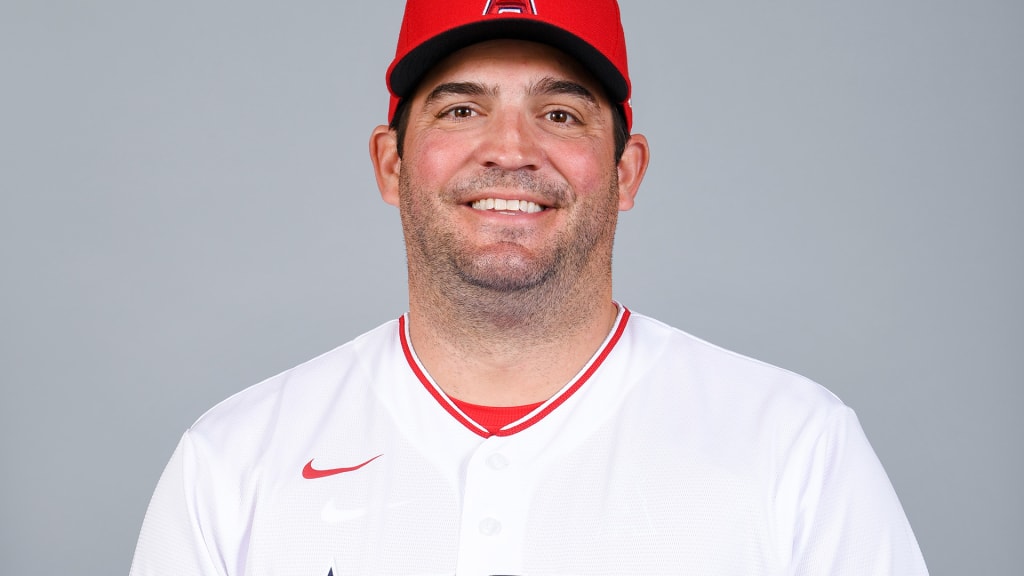
LAKELAND, Fla. -- Ryan Garko was talking with a group of writers in the lobby of the Tigers’ administration building Wednesday morning when executive vice president of baseball operations/general manager Al Avila walked through on his way to the clubhouse. Avila looked over, smiled proudly and kept walking.
“Star in the making,” he shouted.
Garko laughed.
“My hype man,” he said.
Jokes aside, there’s a reason Avila brought in Garko as vice president of player development, and it’s becoming apparent. The imprint of Garko’s influence is already evident across the Tigertown complex, from the technology positioned all over the back fields to the new instructors and coaches working with everyone from top prospects to lower Draft picks, to the culture being instilled that no player is forgotten.
“Every player in the system has an individualized player plan, not just the high picks or the players that are performing,” Garko said. "Every single player has a plan, and every staff member is fully invested in every single player who puts on a Tigers uniform. Everybody says they do that and everybody tries to do that, but culture, it is every minute of every day. You’ve got to work, grind to make sure that the staff raises their standards and upholds that culture of how we practice, how we prepare, how we treat one another and how we treat the players.”
If the culture works, it won’t be Garko as the star, nor the coaches or instructors he brought in. It’ll be the players coming out of the system.
“Everything needs to be built around the player and around the individual,” he continued. “And some of that, the player’s going to tell us how they need to be coached and what they need, and it's our job to now give them the information that we want in the way they want to hear it. And I think we’ve done a lot of listening to our players. We tell our players, ‘If you have a hitting coach back home, great, we'll call him and we'll talk to him.’
“There's no egos. We talk about egoless coaching all the time. There's no egos in our room. There's going to be no more claiming, ‘I fixed this guy,’ or, ‘I did this.’ It's about the player. We celebrate the players. Coaches, we all had our time, we had our chance to play. I think the players feel that, and I hope they know that that everything we do is for them and it's no longer a blanket, cookie-cutter approach. It's pretty hyper-individualized in how we're going to try to attack each player's development.”
This is what Garko talked about putting together when he came on in September, and it hasn’t taken him long. Some of that, he says, is a credit to what was already in place before he arrived. Much of the technology is a product of investment over the past few years from Avila and Tigers chairman/CEO Christopher Ilitch.
“The most appealing thing about talking to Al about coming to take the job was the infrastructure’s laid out. This is teed up for success,” Garko said. “It was really getting the right people in here that weren’t afraid to use it and weren’t afraid to be pushed to go coach, go be creative. Our analytics people, our analysts, our sports science people like to be creative, be fearless in the things we try to do and the things we’re going to do to develop. Leave no stone unturned. If we think it’s going to make a player better, go for it. And if we’re wrong, recalibrate, adjust and try something else.”
The technology end includes the Hawk-Eye player tracking system, which was installed in Major League parks over the last couple of years but is now in place in every Tigers Minor League park. The data should be a treasure trove of information on player, pitch and ball movement that should help in evaluations. But to Garko, it means nothing without the instructors who can use the information to help customize what they’re teaching to each player.
“Data is information. We’re not going to let a computer make every decision,” Garko said. “We’re still human beings. We’re still going to coach. The field is still the most important part of what we’re doing. It’s baseball. Players have to play, and they’re human beings. But the more data we have, it just helps us make better decisions.
“We can’t be behind the pack. We want to be at the front of the pack in terms of what data we have. How we make decisions, we want to be creative in how we do it, and we want to be forward-thinking and we want to find different ways of [meshing] what our eyes are seeing and what the player’s telling us and what the traditional stats are telling us. Is the data backing it up? And I think that’s where Hawk-Eye is amazing.
"You can get things like outfield jumps now. It’s no longer like a coach saying, ‘Well, that guy gets good jumps.’ It’s tracked. Yeah, you can go with a stopwatch, the old way. Hawk-eye is going to give us your top speed, how fast you’re moving, how quickly you move, what kind of baserunner you really are. Defense, baserunning, and obviously the pitch metrics, which Trackman was giving us but Hawk-Eye is going to give us even more data. We’re going to use it to make decisions.”
Those individual plans will come further into focus in the coming days as Minor League rosters become set. The Toledo Mud Hens roster should come out first with the Triple-A season opening Tuesday, but Garko confirmed it will likely include some temporary assignments until the Major League roster is set later in the week and the final batch of roster cuts brings more players to Triple-A.
